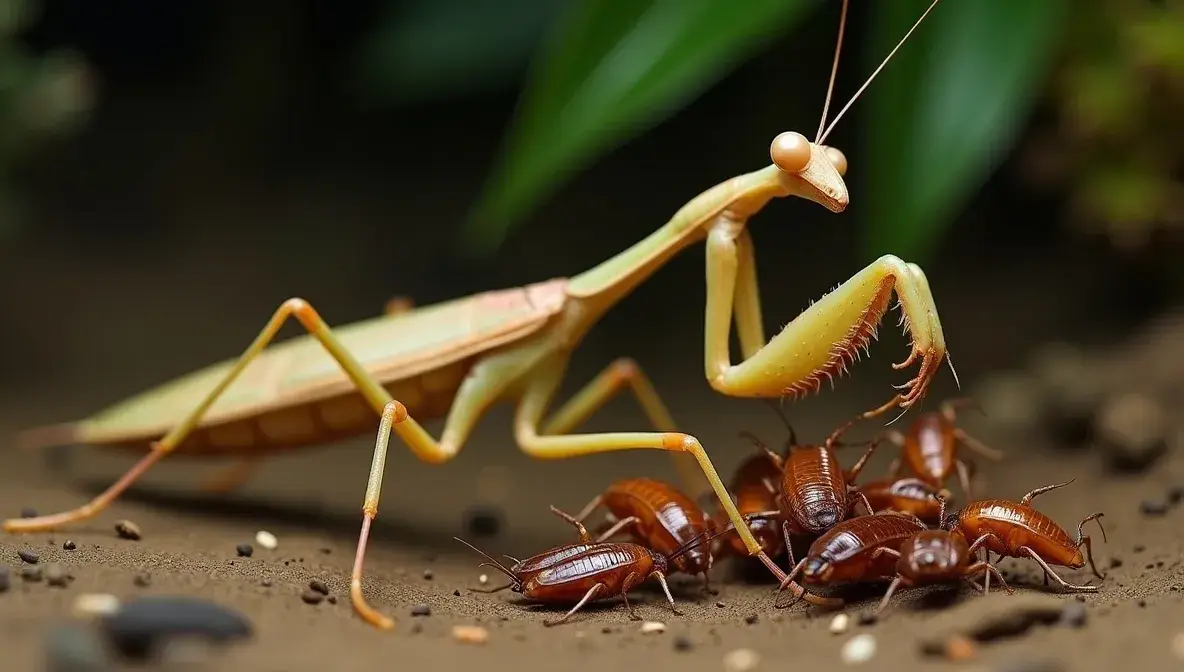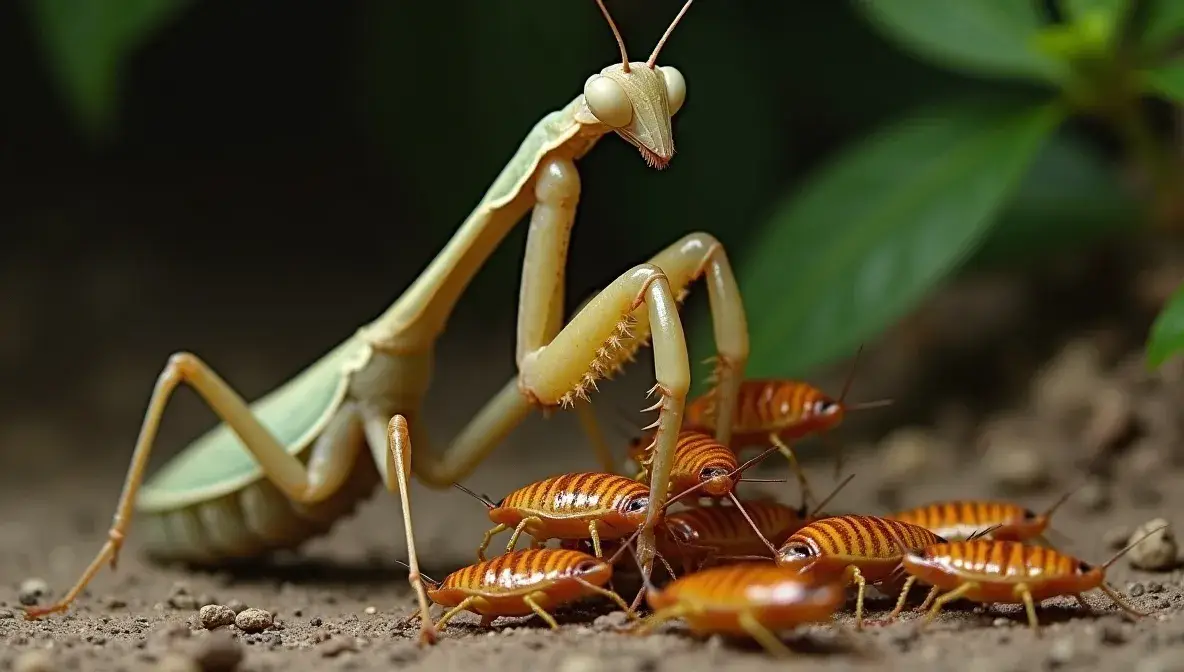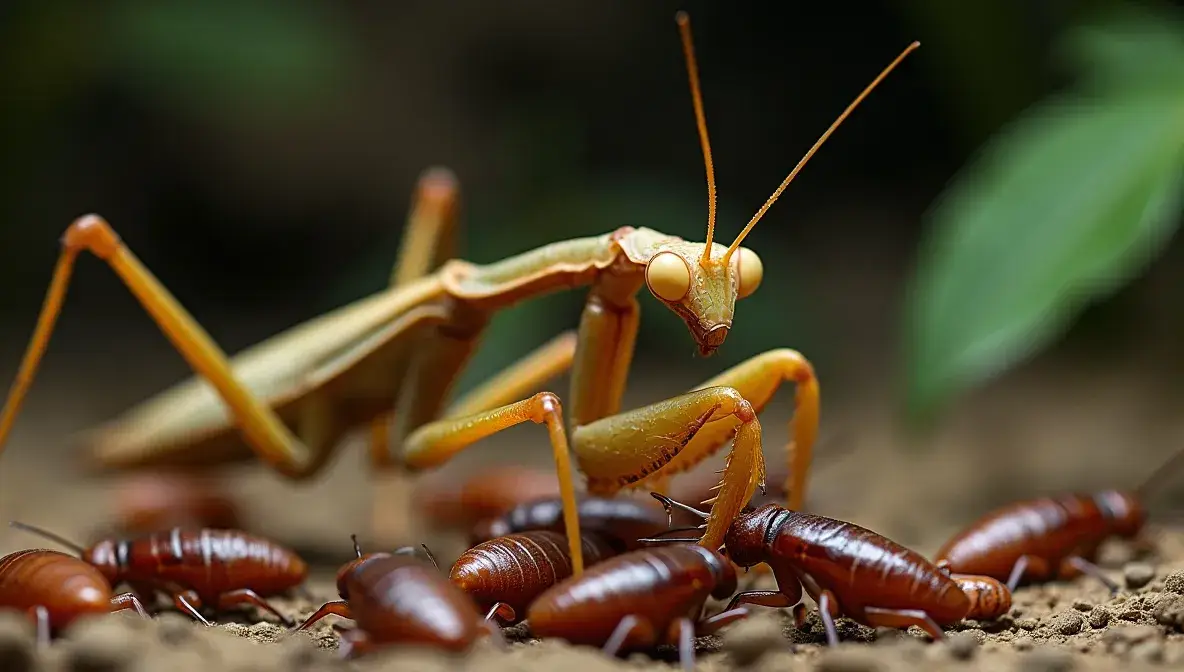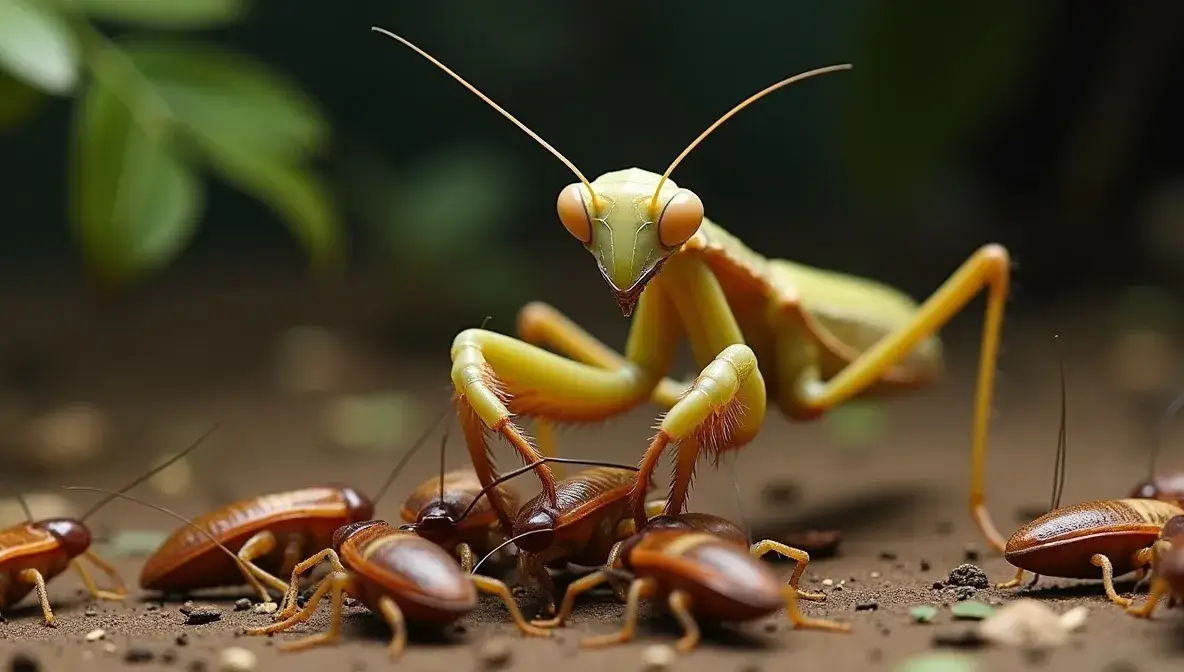When it comes to feeding a pet praying mantis, one of the most common questions is: can praying mantis eat Dubia roaches? The answer is yes, but there are important considerations to keep in mind. Praying mantises are carnivorous insects known for their voracious appetites and unique hunting skills, while Dubia roaches are a popular feeder insect due to their high nutritional value and easy care. This pairing might seem ideal, but understanding the dynamics of feeding Dubia roaches to mantises is essential to ensure the health and well-being of both your pet and its prey.
In this guide, we’ll dive deep into the relationship between praying mantises and Dubia roaches, explore whether they’re a suitable food source, and provide detailed tips on how to feed them safely. Whether you’re a seasoned mantis keeper or a beginner, this article will help you make informed decisions about your insect’s diet.
Why Dubia Roaches Are Popular as Feeder Insects
Dubia roaches (Blaptica dubia) are one of the most widely used feeder insects for reptiles, amphibians, and even exotic pets like tarantulas and mantises. Here’s why they’re so popular:
- High Nutritional Value: Dubia roaches are packed with protein, making them an excellent food source for carnivorous and insectivorous pets.
- Low Odor: Unlike crickets, Dubia roaches have minimal odor, making them ideal for indoor use.
- Long Lifespan: These roaches can live for months, providing a reliable food source for pet owners.
- Non-Climbing and Non-Flying: Dubia roaches can’t climb smooth surfaces or fly, making them easy to handle and contain.
But do these benefits make Dubia roaches suitable for praying mantises? Let’s find out.
The Praying Mantis Diet: Are Dubia Roaches a Natural Fit?

Praying mantises are ambush predators that rely on movement to identify their prey. They are opportunistic hunters and will consume almost any live insect they can overpower. However, their diet in the wild primarily consists of smaller, more agile insects like flies, moths, and grasshoppers.
Dubia roaches, while nutritious, differ from the mantis’s natural prey in several ways:
- Size: Adult Dubia roaches are often too large for most mantises to handle. Baby or nymph Dubia roaches are more appropriate for smaller or juvenile mantises.
- Movement: Dubia roaches are relatively slow-moving, which may make them less appealing to mantises that rely on active prey to trigger their hunting instincts.
- Hard Exoskeleton: The tough exoskeleton of adult Dubia roaches can be difficult for mantises to break down, especially for smaller species.
While Dubia roaches can be fed to mantises, certain precautions must be taken to ensure the mantis can safely consume them.
How to Feed Dubia Roaches to a Praying Mantis

If you decide to include Dubia roaches in your praying mantis’s diet, follow these steps to ensure a safe and successful feeding experience:
- Choose the Right Size Roach
- For juvenile mantises, select small or nymph Dubia roaches.
- For larger mantises, medium-sized roaches are ideal. Avoid feeding adult Dubia roaches unless your mantis is a particularly large species.
- Stimulate Movement
- Place the roach in the enclosure near your mantis. If the roach is too slow, gently nudge it to encourage movement. This will trigger the mantis’s hunting behavior.
- Monitor the Feeding
- Always supervise feedings to ensure the mantis is able to subdue and consume the roach. Remove any uneaten portions to prevent contamination.
- Gut-Load the Roaches
- Before feeding, provide your Dubia roaches with a nutritious diet of fruits and vegetables for at least 24–48 hours. This enhances their nutritional value for your mantis.
- Avoid Overfeeding
- Praying mantises can overeat, which can lead to molting problems or other health issues. Feed them sparingly—about every 2–3 days for adults, and more frequently for juveniles.
Benefits of Feeding Dubia Roaches to Praying Mantises

Although Dubia roaches aren’t a perfect match for every mantis, they offer several benefits when used correctly:
- Nutrient-Rich Diet: Dubia roaches are high in protein and low in fat, supporting healthy growth and energy levels.
- Variety: Adding Dubia roaches to your mantis’s diet provides variety, which is essential for a balanced diet.
- Ease of Care: Dubia roaches are easy to breed and maintain, making them a convenient food source for mantis keepers.
Potential Challenges and How to Overcome Them
While Dubia roaches can be a great addition to a mantis’s diet, there are some challenges to consider:
- Lack of Interest: Some mantises may ignore Dubia roaches due to their slow movements. To address this, try offering more active prey like flies or crickets to stimulate their appetite.
- Size Mismatch: Always match the size of the roach to your mantis. Feeding oversized prey can lead to injury or stress.
- Over-Reliance: Avoid relying solely on Dubia roaches. A varied diet ensures your mantis receives all the nutrients it needs.
Common Questions About Feeding Dubia Roaches to Mantises
1. Can all mantises eat Dubia roaches?
Yes, most mantises can eat Dubia roaches if the size is appropriate. However, smaller species may struggle with larger roaches.
2. Are Dubia roaches better than crickets for mantises?
Both have their pros and cons. Dubia roaches are more nutritious and have a longer lifespan, but crickets are more active and may better trigger a mantis’s hunting instincts.
3. How often should I feed my mantis Dubia roaches?
Feed your mantis every 2–3 days, adjusting the frequency based on its size, species, and age.
Conclusion
So, can praying mantis eat Dubia roaches? The answer is yes, but with some caveats. Dubia roaches are a nutritious and convenient food source, but their size, movement, and tough exoskeleton mean they may not be suitable for all mantises. By selecting the right size, stimulating movement, and offering a varied diet, you can safely incorporate Dubia roaches into your mantis’s feeding routine.
Feeding your praying mantis doesn’t have to be complicated. With the right care and attention to detail, you can ensure your mantis thrives on a healthy, balanced diet.
For more tips on caring for Dubia roaches or other feeder insects, explore our detailed guides on DR Guidez.

Mark Manson is an expert blogger specializing in Dubia Roaches. He shares practical care tips, breeding insights, and feeding advice to help enthusiasts and reptile owners thrive.

